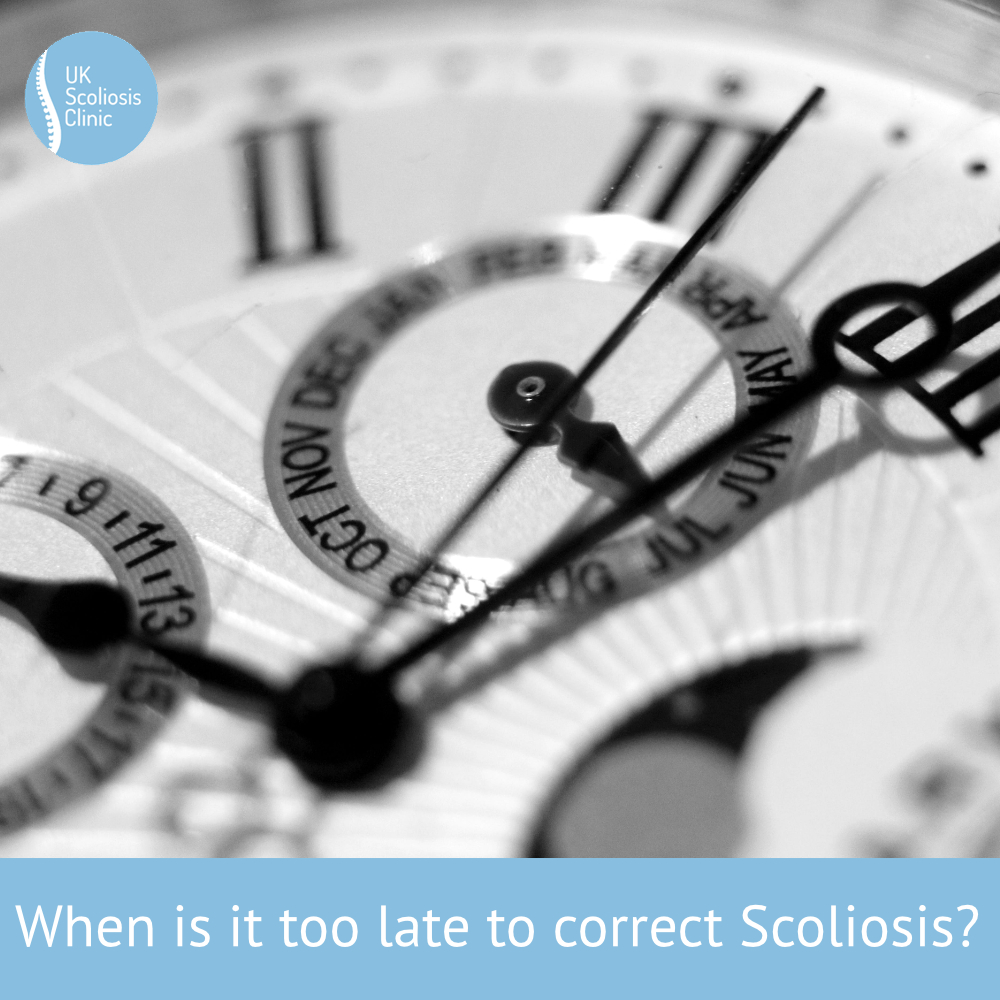
Scoliosis is a 3-Dimensional alteration to the structure of the spine, involving a sideways bend and twist it affects millions of people worldwide. While it is commonly associated with adolescence, scoliosis can develop at any age. Early detection and treatment are crucial for managing the condition effectively. However, many people wonder, “When is it too late to correct scoliosis?” In this blog, we will explore the possibilities of treating scoliosis at different stages of life and shed light on the importance of timely intervention.
Childhood and Adolescent
Scoliosis often manifests during childhood and adolescence, as the rapid growth spurts during these stages exacerbates spinal deformities. Detecting scoliosis early, allows for conservative treatment options such as observation, bracing, or specialised exercise systems. In most cases, correcting scoliosis is easier during this period, as the skeletal system is still growing and flexible and it is easier to control the growth of the spine. Non-surgical interventions can help prevent the progression of the curvature and minimize its impact on the individual’s quality of life. Therefore, it is vital for parents, educators, and healthcare professionals to be vigilant and screen children for scoliosis regularly.
Adulthood
But what happens if scoliosis goes undetected or untreated during childhood? Is it ever too late to correct the condition? While it is true that the optimal time for intervention is during childhood, scoliosis treatment can still be beneficial in adulthood. The goals of treatment shift slightly, focusing more on pain management, improving function, and preventing further curvature progression. Conservative approaches such as physical therapy, chiropractic care, and exercise can help alleviate discomfort and strengthen the surrounding muscles. In some cases, orthotic devices or spinal braces may also provide support and stability. By the time a person has reached adulthood, their spine is probably too rigid to actually correct the Scoliotic curve – however, it’s usually possible to stop the curve from progressing and getting any worse.
Later Life
Scoliosis – Specifically a form known as “de-novo” or “degenerative” scoliosis occurs frequently in the over 65’s. This is different from adult cases of Scoliosis since here the scoliosis starts to develop where it did not previously exist. The chances for correcting De-novo Scoliosis are low since the degeneration of the spine which causes the condition is due to ageing and sadly that cannot be prevented!
Intervention with bracing or exercised-based therapy can slow progression considerably, and in many cases will give people the ability to remain upright, independent and active, whereas they may otherwise struggle.
Conclusion
In summary, it is never too late to address scoliosis, although early detection and intervention are ideal.
Timely treatment during childhood and adolescence can prevent progression and reduce the need for more invasive measures later in life. However, even in adulthood, conservative treatments and, if necessary, surgical interventions can provide relief, improve function, and enhance the quality of life. The key lies in seeking professional help, staying informed, and embracing the support available to manage the physical, emotional, and psychological aspects of scoliosis. Remember, it’s never too late to take control and seek the best possible outcomes for a life with scoliosis.


